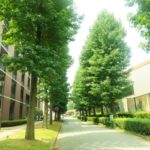Ichiban Saisho/Ichiban Saigo (一番最初/一番最後 – First/Last)
Ichiban Saisho/Ichiban Saigo
一番最初/一番最後
I often hear and say the phrases, ichiban saisho (一番最初) and ichiban saigo (一番最後) in daily conversation.
私は日常会話で、「一番最初」や「一番最後」という表現をよく聞きますし、よく使います。
Ichiban (一番) means “most,” saisho (最初) means “first,” and saigo (最後) means “latest,” so the literal meanings of ‘ichiban saisho’ and ‘ichiban saigo’ are “the most first” and “the most last,” respectively.
「一番」は “most”、「最初」は “fist”、「最後」は “last” を意味するので、「一番最初」と「一番最後」の文字どおりの意味は、それぞれ “the most first” と “the most last” になります。
These are redundant expressions, and some people think they are not correct Japanese.
これは重複表現(英語では “redundant expression”)であり、正しくない日本語と考える人もいます。
However, they may not be wrong if you think that saisho and saigo means a range (i.e., “first part” and “last part”), and ichiban refers to an edge point of the range.
ただし、「最初」や「最後」が指す対象が領域的なものであり、その中でも最も端であることを表す(強調する)ためであると考えれば、一概に誤りとは言えないとも思います。
You should not use ichiban saisho and ichiban saigo in formal documents, but I think that they have come to be widely accepted in daily conversation.
「一番最初」「一番最後」という表現は正式な文書では避けるべきですが、日常会話では広く許容されつつあると感じています。




